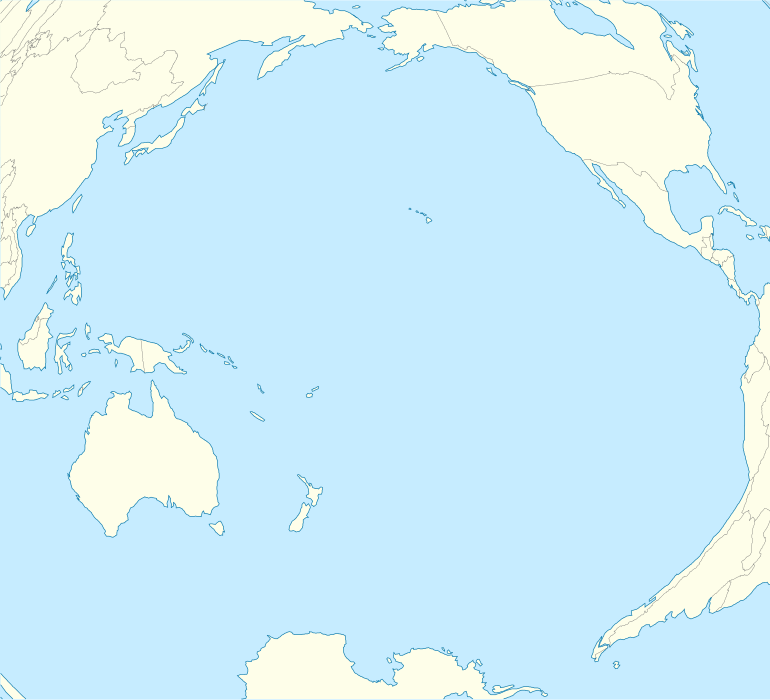Desventuradas Islands
The Desventuradas Islands (Spanish: Islas Desventuradas,[2] IPA: [ˈizlaz ðezβentuˈɾaðas], "Unfortunate Islands" or Islas de los Desventurados, "Islands of the Unfortunate Ones"[3]) is a group of four small islands located 850 kilometres (530 mi) off the coast of Chile, northwest of Santiago in the Pacific Ocean.[4] They are considered part of Insular Chile.
| Native name: Islas Desventuradas | |
|---|---|
.jpg) Map of Desventuradas Islands, also known as San Félix Islands | |
 Desventuradas Islands | |
| Geography | |
| Archipelago | Desventuradas |
| Adjacent bodies of water | Pacific Ocean |
| Total islands | 4 |
| Major islands | San Ambrosio, San Félix, Gonzalez and Roca Catedral |
| Area | 5.36 km2 (2.07 sq mi)(together) |
| Highest elevation | 479 m (1,572 ft) max. |
| Administration | |
| Region | |
| Province | Valparaíso Province |
| Commune | Juan Fernández |
| Demographics | |
| Population | 11 |
| Additional information | |
| Time zone | |
| • Summer (DST) |
|
| NGA UFI= -900077 "San Ambrosio" -883263 "Gonzáles" -900282 "San Félix" | |
Because of their isolation and difficulty of access, there are no human settlements on these islands, but a detachment of the Chilean Navy is stationed on Isla San Félix, which also hosts the 2,000-metre (6,600 ft) Isla San Felix Airport.
History
The islands were first sighted by Juan Fernández on 6 November 1574 while voyaging from Callao to Valparaíso, and perhaps earlier by Ferdinand Magellan in 1520. Pedro Sarmiento de Gamboa wrote in 1579 that "they are now called after St. Felix and St. Ambor (i.e. Felix and Nabor)". However, the name of the martyr Ambor (Nabor) became confused with that of the more famous bishop Saint Ambrose (San Ambrosio).[5][6] It is, probably, one of these islands that Captain John Davis struck one night in 1686. He was able to continue his voyage but erroneously reported the position of the incident.[7]
San Felix played a part in the Falklands War. In May 1982, the Chilean government allowed an RAF Nimrod R1 to fly signals reconnaissance sorties from the island, gathering information on Argentine Air Force movements.[8][9]
Ecology
The vegetation of the larger islands is a miniature mosaic of matorral, barren rock, various size trees, and shrubs mixed with ferns and perennial herbs. Thamnoseris lacerata is an endemic shrub species.
There are no permanent sources of fresh water on any of the islands. Vertebrates inhabiting both of the largest islands are limited to birds. Ten species of marine birds and one land bird species, some of them endangered, make their nests on or visit the islands.
List of islands and location
The Desventuradas Islands, from east to west:
| Island/Rock | Area (km²) | Peak Elevation (m) | Geographical Coordinates | |||||
|---|---|---|---|---|---|---|---|---|
| San Ambrosio | 3.1 | 479 | 26°20′37″S 79°53′28″W | |||||
| San Felix group | ||||||||
| Islote González | 0.25 | 173 | 26°18′36″S 80°05′06″W | |||||
| San Félix | 2 | Cerro Amarillo, 193 | 26°17′30″S 80°05′42″W | |||||
| Roca Catedral | 0.01 | 53 | 26°16′25″S 80°07′15″W | |||||
| Total | 5.36 | 479 | ||||||
See also
References
- "Time Zone & Clock Changes in Desventuradas Islands, Chile". timeanddate.com. Retrieved 4 May 2020.
- "An Archaeological Exploration of Robinson Crusoe Island" (PDF). Archived from the original (PDF) on 2014-02-12. Retrieved 2011-11-19.
- ADM - Records of the Admiralty, Naval Forces, Royal Marines, Coastguard, and related bodies; Pacific Ocean: South America, W Coast: Chile: Islas de los Desventurados and Islas Juan Fernandez;
- "San Félix-San Ambrosio Islands temperate forests". Terrestrial Ecoregions. World Wildlife Fund.
- B. Glanvill Corney, "The Isles of San Felix and San Nabor," The Geographical Journal, Vol. 56, No. 3 (September 1920), pp. 196–200
- Brand, Donald D. The Pacific Basin: A History of its Geographical Explorations The American Geographical Society, New York, 1967, p.127.
- Jacques Julien Houtou de Labillardière (1800). Relation du voyage à la recherche de La Pérouse ... 1791, 1792, et pendant la Ière et la 2de année de la République françoise. 2 tom. [and] Atlas.
- "Archived copy". Archived from the original on 2012-04-30. Retrieved 2008-08-26.CS1 maint: archived copy as title (link)
- Alexander, Harriet (7 July 2014). "'Without Chile's help, we would have lost the Falklands'". The Telegraph. Retrieved 8 July 2014.
External links
| Wikimedia Commons has media related to Islas Desventuradas. |